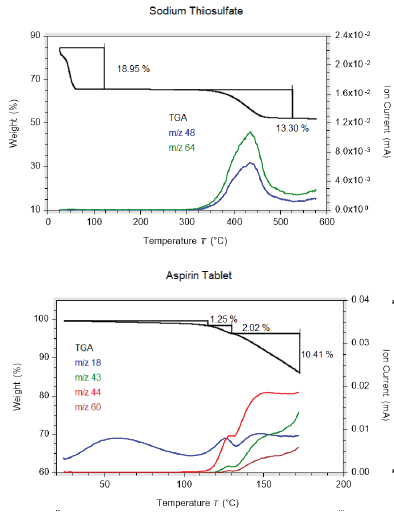Evolved Gas Analysis with Thermogravimetric Analysis (TGA-MS)
Home » Evolved Gas Analysis with Thermogravimetric Analysis (TGA-MS)
Materials outgassing and thermal decomposition can lead to performance deterioration, failure, and safety concern. In this regard, Eurofins EAG Lab has established numerous outgassing analytical techniques to meet the industry needs, including TGA-IR, headspace GCMS, Residual Gas Analysis (RGA), and Fractional IGA analysis. While these techniques often overlap in certain capability, each is specialized to provide unique analytical information, depending on sample types (chemistry, geometry, morphology, etc.), applications, temperature range, atmosphere (or vacuum), sensitivity requirement, etc.
TGA with hyphenated technologies such as infrared (IR) and/or mass spectrometry (MS) is specialized in investigating real time outgassing behavior of materials, in the temporal/temperature regime of interest and desired atmosphere, including;
- real time, high sensitivity (resolution ~0.1 μg), quantitative analysis of mass loss as the material is heated
- identification of the evolved gas species associated with mass loss, including adsorbed moisture, bound water, residual organic solvents, and volatile decomposition products
- outgassing profile of individual gas species as a function of time and temperature
Figure 1 shows:
(a) TGA-MS of sodium thiosulfate, demonstrating the quantitative determination of moisture content and temporal/temperature profile of decomposition product SO2;
(b) TGA – MS of formulated aspirin revealing three H2O outgassing events from ambient to 100 °C, 100 °C – 130 °C and above 130 °C, corresponding to physiosorbed (note: moisture can be accurately determined in this case), chemically bound and/or thermal decomposition nature, respectively.

Would you like to learn more about TGA-MS?
Contact us today for your evolved gas analysis with thermogravimetric analysis needs. Please complete the form below to have an EAG expert contact you.